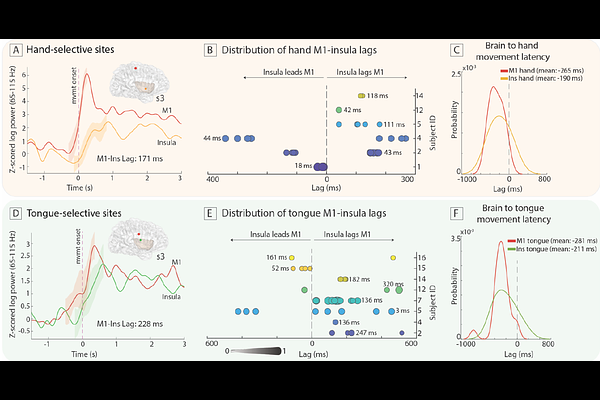The Human Insula Encodes Somatotopic Representation of Motor Execution with an Effector-Specific Connectomic Map to Primary Motor Cortex

The Human Insula Encodes Somatotopic Representation of Motor Execution with an Effector-Specific Connectomic Map to Primary Motor Cortex
Kerezoudis, P.; Jensen, M. A.; Klassen, B. T.; Worrell, G. A.; Gregg, N. M.; Ince, N. F.; Hermes, D.; Miller, K. J.
AbstractUnderstanding motor representation in the human brain requires mapping beyond the primary motor cortex, into the distributed networks that coordinate complex movements. The insular cortex, a multifunctional hub buried within the Sylvian fissure, has been implicated in motor control through clinical observations and neuroimaging, yet its precise contribution to movement processing remains one of the least understood aspects of motor neurophysiology. To address this gap, we quantified electrophysiological changes from implanted depth electrodes in patients performing simple movement tasks combined with single-pulse electrical stimulation (SPES) to map functional connectivity. We observe regions of distinct somatotopic separation bilaterally, as well as cross-modal regions that are active for different movement types. Hand representation is centered along the ventral aspect of the middle and posterior short gyri bilaterally, while tongue/mouth tuned sites cluster in the dorsal posterior short gyrus and the dorsal long gyri. Insular activity temporally follows the primary motor cortex (M1) and precedes movement onset. SPES revealed somatotopically-specific connectivity between corresponding sites in M1 and insula (hand-to-hand, tongue-to-tongue) and between bilateral insulae. These observations establish that somatotopy is a conserved property of distributed motor control incorporating the insula, with direct implications for surgical planning and targeted neuromodulation therapies.